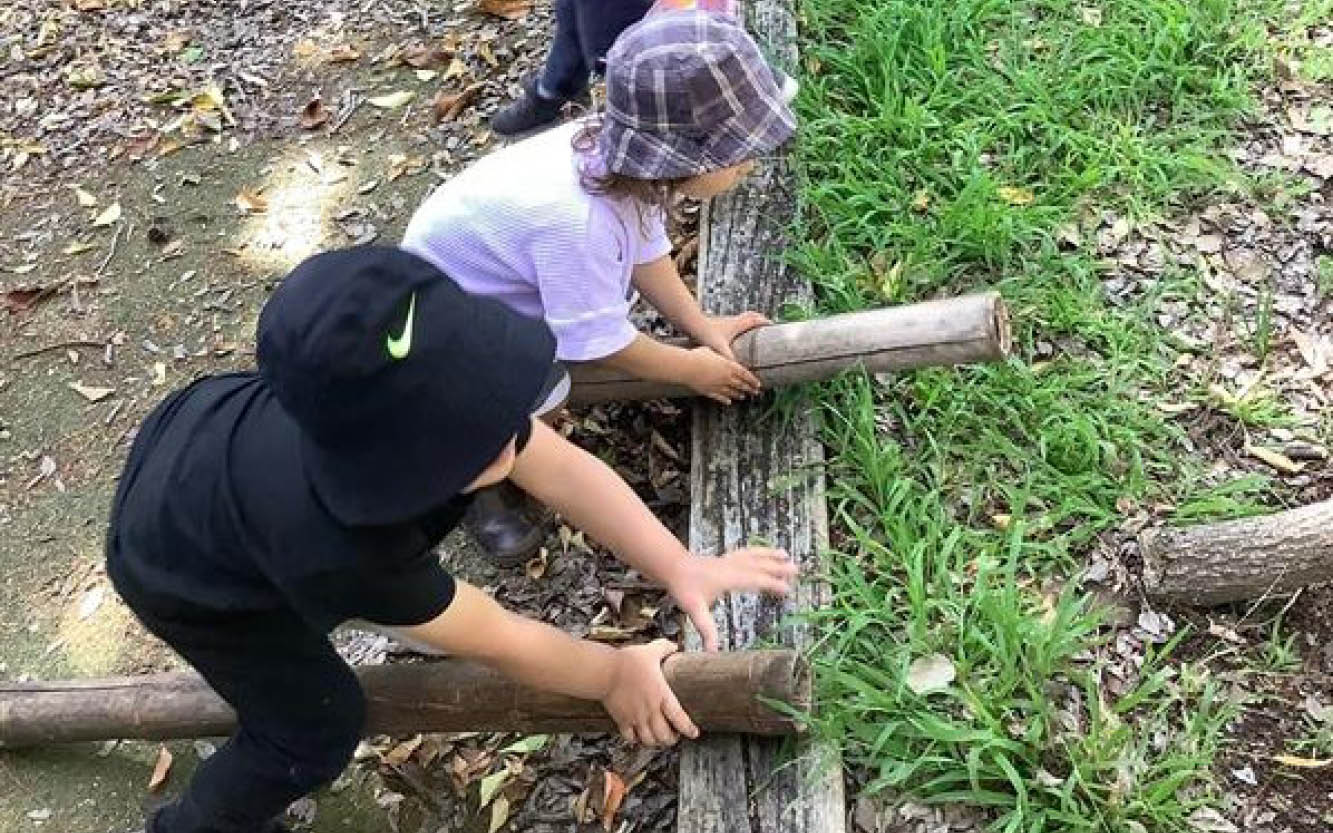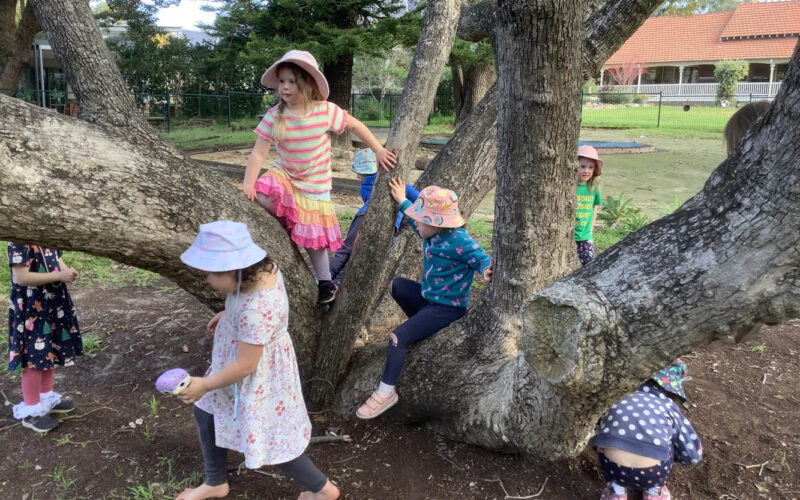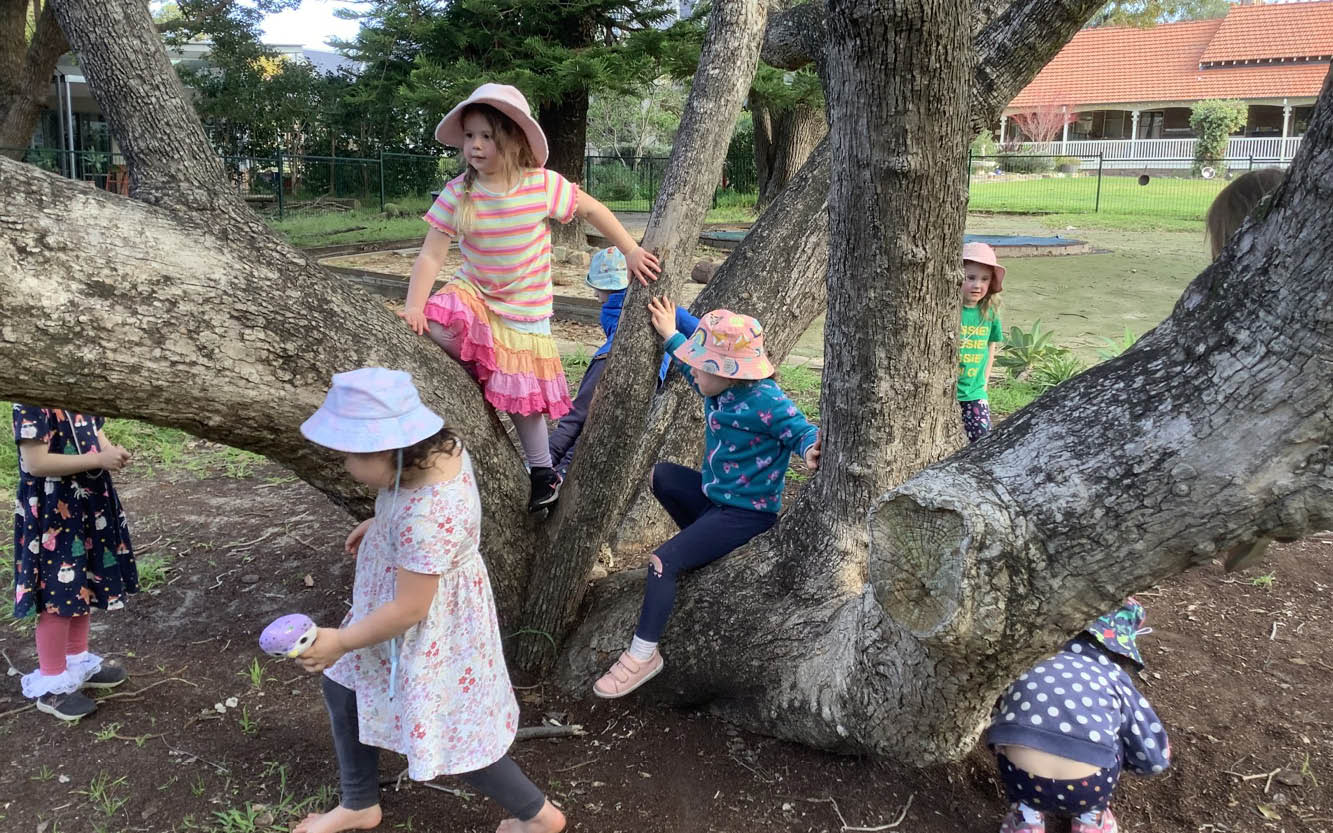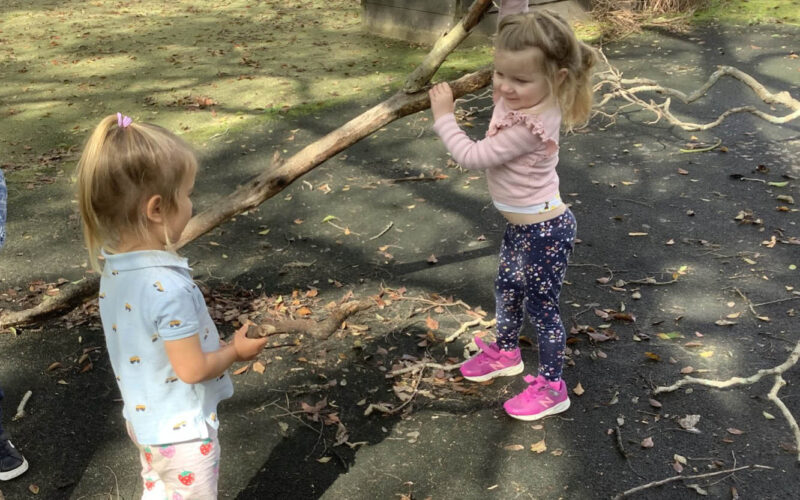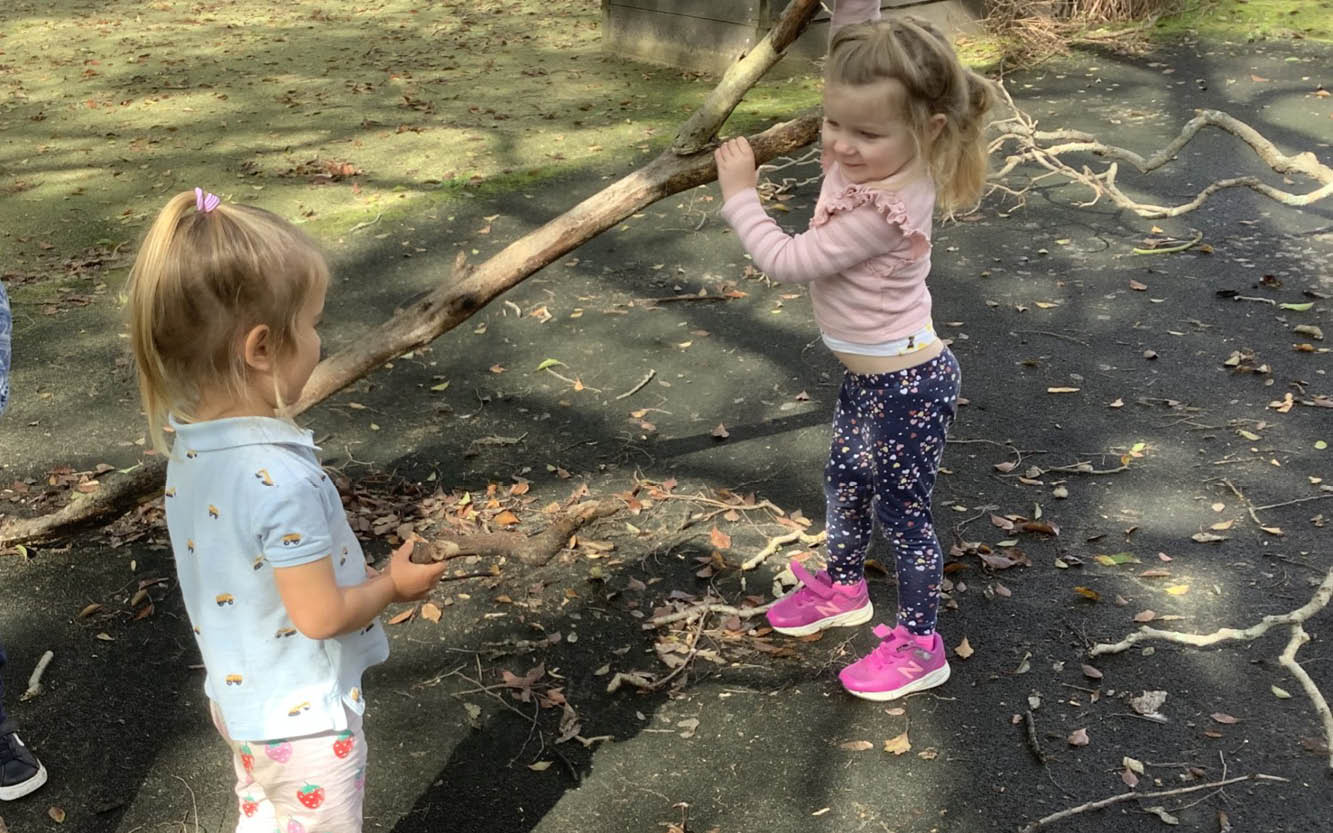Child-Led Discovery in Nature
Our approach to this space has been rooted in nature pedagogy, where children’s curiosity, questions, and ideas guide their learning. During their visits, we asked the children how nature makes them feel, what they love most about being outdoors, and what they would like to do in this space. We believe that children express themselves in many ways, influenced by their age, temperament, and learning style, so we encouraged them to share their thoughts through words, drawings, and even through the way they explored and played in nature.
For instance, while some children eagerly told us about their love for climbing rocks or collecting sticks, others communicated their feelings through movement, carefully arranging leaves and stones they had gathered or playing with small-world replicas of natural spaces. We observed closely, knowing that children often reveal their thoughts and emotions through their actions. As one of our educators, Sima, reflected: “Sometimes you don’t need to hear from them; you can see their excitement and engagement in how they move and explore.”
Connecting to Nature and First Nations Culture
Each session began with a gathering in the outdoor classroom, where we acknowledged the traditional custodians of the land, the Wangal and Gadigal people. The children identified elements of nature—rocks, trees, and bugs—and we had insightful conversations about how much nature surrounds us, even when it’s often overlooked. Many were surprised when we discussed how humans are part of nature too.
We also talked about how the landscape has changed over time, with much of the natural environment removed to make way for buildings. This discussion sparked the children’s interest in restoring nature, and their eagerness to bring back more natural elements into their space was evident. We introduced them to the possums that live nearby pointing out possum droppings and discussing how these animals are totems for First Nations People. This opened opportunities to discuss the importance of caring for both the possums and the broader environment as part of our commitment to valuing First Nations perspectives.
Creativity and Expression Through Play
The children’s responses have been beautiful and varied. Arti, age 3, watched his educator write his words on a poster and immediately wanted to join in. The Educator brought out some drawing materials, and he created a vibrant rainbow, proudly declaring that rainbows are part of nature. This inspired other children to draw rainbows and even practice their writing, with some telling us they had written their names through a series of squiggly lines.
As they engaged with the small-world displays we provided—featuring miniature natural environments—children used their imagination to incorporate natural objects like sticks and rocks into their play. Some children focused on the visual aspects of the displays, while others, like one little girl who gazed in awe at images of large boulders, expressed her excitement by saying, “That looks like fun!” She pointed to the rocks, telling us how much she would love to climb on them.
Why Nature Pedagogy Matters
This child-led approach to learning allows us to follow the children’s interests and respond to their ideas. Nature pedagogy emphasizes the importance of allowing children to explore, discover, and learn at their own pace, using their natural environment as the classroom. Through these experiences, children develop a sense of wonder and respect for the world around them, while also building skills such as critical thinking, creativity, and collaboration.
At The Infants’ Home, we are committed to listening to children’s voices and giving them the opportunity to shape their own learning experiences. By allowing them to explore nature on their terms, we empower them to become capable, confident contributors to their community. This aligns with our philosophy that children are our greatest stakeholders and that their perspectives and ideas are not only valued but are crucial to creating a space where they feel truly heard and respected.
We will continue to update you as the children’s journey in this natural oasis evolves, and we look forward to sharing the changes and ideas they inspire along the way.
Thank you for your continued support as we create a space where nature, learning, and community come together.

